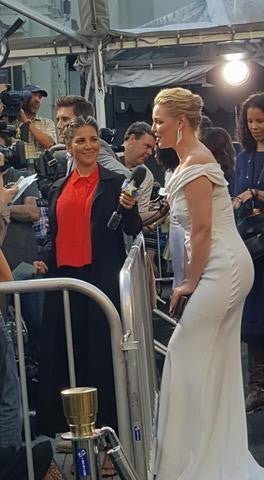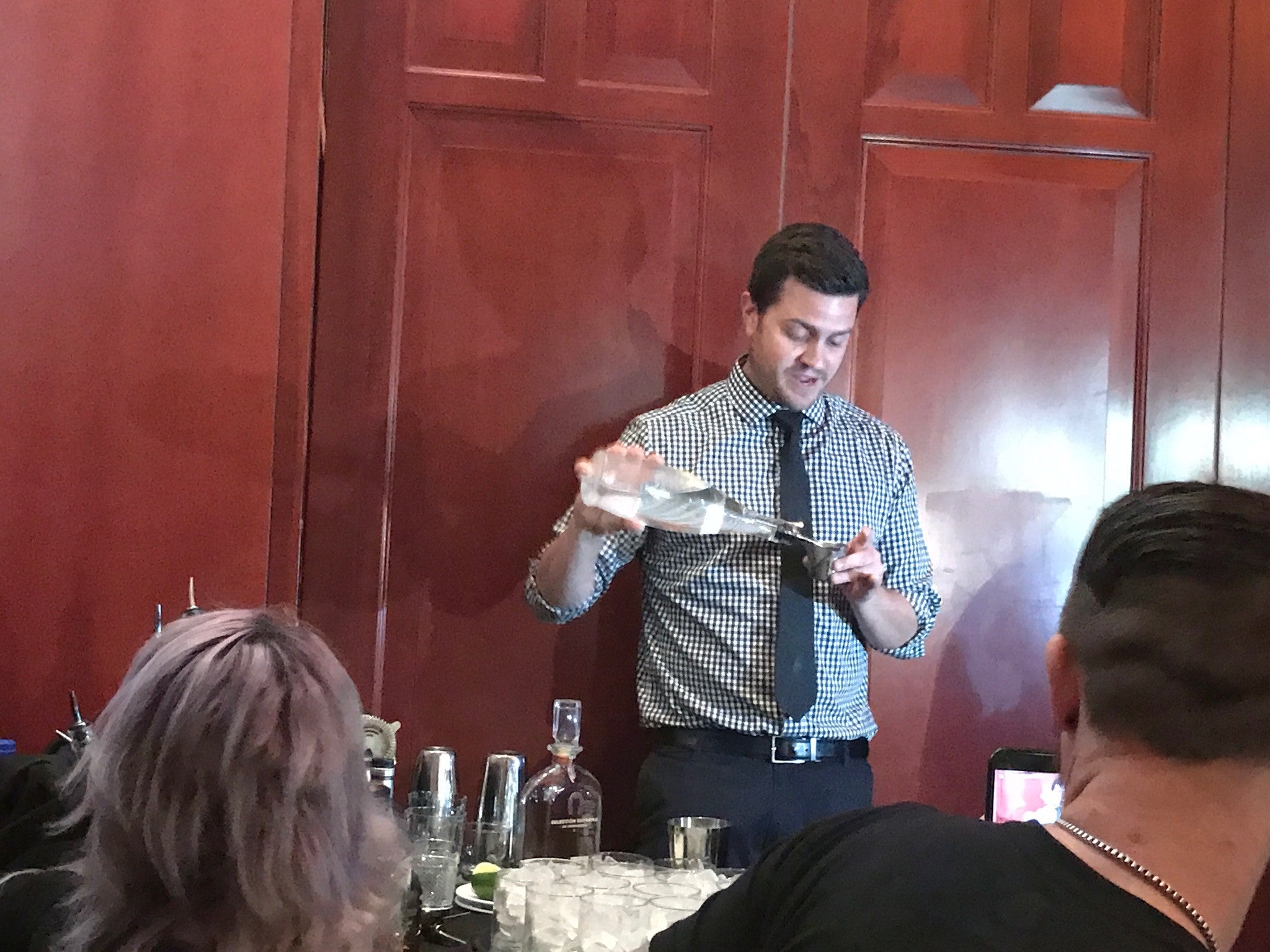
OTHER: MIXED RACE IN AMERICA (A podcast by The Washington Post's Alex Laughlin)
There's something that happens when the multiracial community see themselves in media. It doesn't matter the mix, the community is just happy to see themselves represented. Take the Cheerios commercial that had a Caucasian mom, African-American dad and biracial daughter, Gracie. The commercial was just supposed to be about a young daughter who wants her dad to remain healthy so she pours Cheerios on him to encourage him to eat them to remain heart-healthy. Cute and simple, right? Not so much. General Mills had to shut off comments on their social media pages due to being inundated with racial slurs and hate speech. The multiracial community stood up and applauded General Mills for showing what we have already known, that interracial relationships exist and multiracial children are oftentimes the by-products of those relationships. Gasp!
As one of the fastest-growing populations according to the US Census, the multi- community sent in images by the droves to pages like We Are the 15 Percent of what their families looked like. They were taking to social media and blog posts writing about how it felt to them to see their reality reflected on television. Since then, a number of tv ads have appeared by brands depicting the interracial and/or multiracial community. Besides General Mills, Swiffer, Old Navy, Target and Walmart have embraced the multi community. TV shows like Black-ish, which is a huge fan favorite on tv, is one show that has popped up since then but it's not just the small screen that's seeing the mixed-race community in media.
Just last year, the big screen had Loving as an Oscar contender. The film about Mildred (a black woman) and Richard (a white man) Loving whose marriage led to a landmark Supreme Court ruling overturning state miscegenation law in 1967 was a big hit in theaters. This year is it's 50th year since the court case and many organizations like Multiracial AMericans of Southern California (MASC), Loving Day, Mixed-Heritage Day and Multi Culti Corner will hold events commemorating this anniversary. It's only fitting that at this 50-year mark, more tv shows, books and products are being made to support this community.
The latest comes from the podcast world. Other: Mixed Race in America is offered by The Washington Post. According to the website: "this podcast explores the inner workings of the mythic American melting pot; what happens when your parents come from two different countries, cultures, or races."
Starting today, this five-part miniseries introduces you to "stories of mixed race Americans who are grappling with questions about who they are, and what it means to be an American today."
Host Alex Laughlin shares her own stories and interviews multiracial people about what it means to be mixed in America today.
We got a chance to interview Alex and ask her a bit about herself, the podcast and what she sees for the future of the mixed race community.
Share a bit about yourself and your mixed-race experience growing up
I'm a 25-year-old, hapa-Korean Army brat who grew up all over the country. I spent my formative years in Hawaii where I was exposed to incredible diversity and an embrace of Asian culture. After fifth grade, my family moved to a new place every few years -- I've lived in Kansas, Washington state, Georgia, and now Washington, D.C. Every new city we lived in added a new layer of complexity to the way I thought about my identity.

Do you have any mixed-race role models?
I'm a huge fan of Mitski and Japanese Breakfast. Their music got me through producing this podcast over the last year. Both of them are able to translate their specific experiences in a way that mass groups of people identify with, even if they don't necessarily identify racially with them. Mitski's song "Your Best American Girl" specifically was always on repeat for me over this last year. Also, they're just really cool. It's so inspiring to see hapa girls slaying on the guitar like, "yes, I am awesome, and yes I also sort of look like you." It's so empowering.
Why a mixed-race podcast?
There are so many podcasts, and there are even a few podcasts that highlight multiracial experiences. But I think that any time we can make an effort to complicate the way people think about race on a large scale, we should take that opportunity. This project was also a personal journey for me, and you hear some of that in the podcast. Spending a year thinking really critically about identity inevitably led me to some epiphanies on my own.
What kinds of stories (interviews) should we expect to hear in the mini series?
There are some deeply intimate stories told in the podcast, both from myself and from guests I had on. We talk about heartbreak, betrayal, drug abuse, family conflicts, loneliness -- and ultimately, finding "your people."
What's next for you and the podcast? What topics/stories are yet to be explored:
I'm not sure yet! I've spent the last year working on this project, and I'm glad to finally have an end in sight. One thing I know for sure is that this podcast is in no way the definitive portrait of what it means to be mixed in America today. It's just one contribution to a much larger and long-lasting conversation. I'm excited to keep participating in that conversation.
As a blog about multiracial/multicultural parenting and families, we chatted a bit with Alex about this topic.
Is there anything parents can do to help their mixed children navigate their "mixedness"and what would that be?
I think the most important thing parents of mixed kids can do is to validate what their kids are feeling. Navigating multiracial identity when your brain isn't even fully developed is complicated enough as it is -- forget trying to explain it to a grown up who doesn't seem to get it. Be there for your kid, and if they decide they're going to fully identify as one race or another for a while, let them feel that out! Nothing is permanent, but the most important thing for them to learn is that their worldview matters.
What would you tell your 13-year-old self about race and identity?
I would tell my 13-year-old self that she doesn't need to buy into stereotypes of "Asian" behavior to have friends or to belong somewhere.

Are we, as mixed race folks, there yet? When will "get there" and what does "there" look like? How will we know we're "there?"
I think "there" entails a much larger scale success, and mixed race people are just part of that. "There" is a broad understanding and compassion of the role that race plays in all of our lives, and the empathy to hear each other's stories and validate each other's experiences. "There" is finally seeing accurate levels of diversity across all top levels of industries, as well as economic equity that doesn't rely on the historic oppression of groups of people. "There" is, essentially, solving the problem of racism in our country. Which...is a pretty tall order, given our history. I certainly don't think we've made it there yet, but I hope we're on our way.

We are on our way. The multiracial community is not standing on the sidelines waiting for corporate America or anyone else for that matter to catch up to our reality.
We are here and we are making it known!
You can find Other:Mixed Race in America on itunes:
https://itunes.apple.com/us/podcast/other-mixed-race-in-america/id1229625388?mt=2
or here:
https://www.washingtonpost.com/graphics/national/other-podcast-mixed-race-in-america/?utm_term=.d3de50caef69
Let us know what you thought of the podcast in the comments.




Leave a comment
This site is protected by hCaptcha and the hCaptcha Privacy Policy and Terms of Service apply.